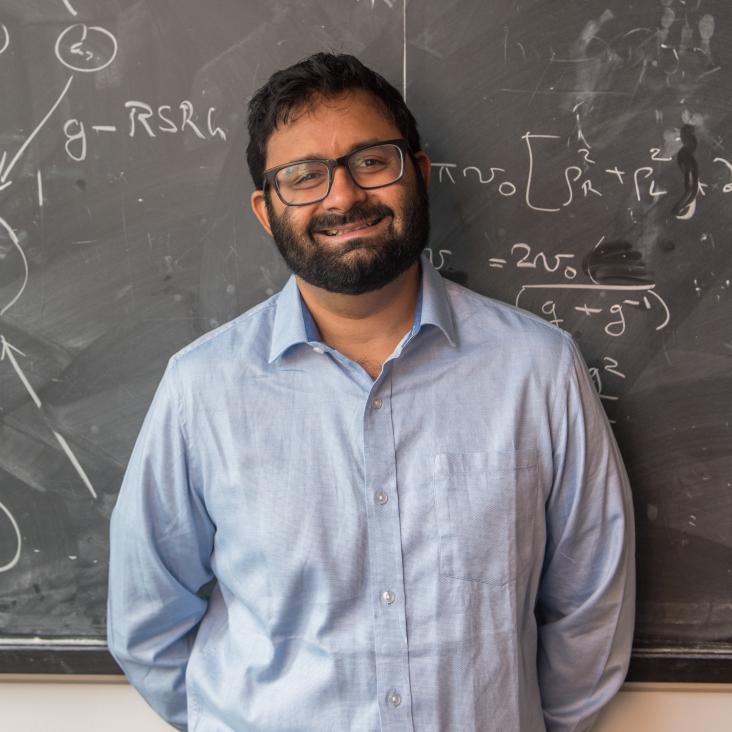Interacting multi-channel topological boundary modes in a quantum Hall valley system
(2019)
Interacting multi-channel topological boundary modes in a quantum Hall valley system
Nature Springer Nature 566 (2019) 363-367
Abstract:
Symmetry and topology are central to understanding quantum Hall ferromagnets (QHFMs), two-dimensional electronic phases with spontaneously broken spin or pseudospin symmetry whose wavefunctions also have topological properties1,2. Domain walls between distinct broken-symmetry QHFM phases are predicted to host gapless one-dimensional modes—that is, quantum channels that emerge because of a topological change in the underlying electronic wavefunctions at such interfaces. Although various QHFMs have been identified in different materials3,4,5,6,7,8, interacting electronic modes at these domain walls have not been probed. Here we use a scanning tunnelling microscope to directly visualize the spontaneous formation of boundary modes at domain walls between QHFM phases with different valley polarization (that is, the occupation of equal-energy but quantum mechanically distinct valleys in the electronic structure) on the surface of bismuth. Spectroscopy shows that these modes occur within a topological energy gap, which closes and reopens as the valley polarization switches across the domain wall. By changing the valley flavour and the number of modes at the domain wall, we can realize different regimes in which the valley-polarized channels are either metallic or develop a spectroscopic gap. This behaviour is a consequence of Coulomb interactions constrained by the valley flavour, which determines whether electrons in the topological modes can backscatter, making these channels a unique class of interacting one-dimensional quantum wires. QHFM domain walls can be realized in different classes of two-dimensional materials, providing the opportunity to explore a rich phase space of interactions in these quantum wires.Topological 'Luttinger' invariants for filling-enforced non-symmorphic semimetals
Journal of Physics: Condensed Matter IOP Publishing 31:10 (2019) 104001
Abstract:
Luttinger’s theorem is a fundamental result in the theory of interacting Fermi systems: it states that the volume inside the Fermi surface is left invariant by interactions, if the number of particles is held fixed. Although this is traditionally justified in terms of analytic properties of Green’s functions, it can be viewed as arising from a momentum balance argument that examines the response of the ground state to the insertion of a single flux quantum [M. Oshikawa, Phys. Rev. Lett. 84, 3370 (2000)]. This reveals that the Fermi volume is a topologically protected quantity, whose change requires a phase transition. However, this sheds no light on the stability or lack thereof of interacting semimetals, that either lack a Fermi surface, or have perfectly compensated electron and hole pockets and hence vanishing net Fermi volume. Here, I show that semimetallic phases in non-symmorphic crystals possess additional topological ‘Luttinger invariants’ that can be nonzero even though the Fermi volume vanishes. The existence of these invariants is linked to the inability of non-symmorphic crystals to host band insulating ground states except at special fillings. I exemplify the use of these new invariants by showing that they distinguish various classes of twoand three-dimensional semimetals.Signatures of information scrambling in the dynamics of the entanglement spectrum
(2019)


